 will be closed December 24th - January 2nd for the Holidays.
will be closed December 24th - January 2nd for the Holidays.
Regular business hours will resume on Monday, January 5th.
AOG Services are available.
| Part #: | 064-1017-00 |
|---|---|
| Model: | KAC-952 |
| Desc: | HF Antenna Coupler |
| OEM: | BendixKing |
| NSN: | 5821-01-185-7531 |
|---|---|
| Sched-B: | 8543709610 |
| ECCN: | 7A994 |
| Cage Code: | 22373 |
 Select part number above to view pricing and availability.
Select part number above to view pricing and availability.
| Price | Condition | Availability | Stock Info | |
|---|---|---|---|---|
| Price | Cond. | Avail. | Stock Info | |
| $4,450.00 | OH OUTRIGHT | 1 IN STOCK |
Serial #: 6967 [Details]
|
|
| $3,250.00 | OH EXCHANGE | 1 IN STOCK |
Serial #: 6967 [Details]
|
| Price | Condition | Availability | Stock Info | |
|---|---|---|---|---|
| Price | Cond. | Avail. | Stock Info | |
| $4,950.00 | OH OUTRIGHT | 1 IN STOCK |
Serial #: 17298 [Details]
|
|
| $2,950.00 | OH EXCHANGE | 1 IN STOCK |
Serial #: 17298 [Details]
|
| Price | Condition | Availability | Stock Info | |
|---|---|---|---|---|
| Price | Cond. | Avail. | Stock Info | |
| $5,650.00 | OH OUTRIGHT | REQUEST LEAD TIME |
|
|
| $3,250.00 | OH EXCHANGE | REQUEST LEAD TIME |
|
| Price | Condition | Availability | Stock Info | |
|---|---|---|---|---|
| Price | Cond. | Avail. | Stock Info | |
| REQUEST | OH OUTRIGHT | REQUEST LEAD TIME |
|

FEATURES
SPECIFICATIONS
| Size: | 5.75"W x 7.24"H x 14.25"L | Weight: | 12.5 lbs. |
| Antenna Coupler Characteristics: | Will match open wire antennas, 20 to 75 feet in length and grounded antennas, 10 to 25 feet in length throughout the frequency range. Grounded antennas are recommended for operation above 30,000 feet | Temperature Range: | -55C to +70C |
| TSO Compliance: | FAA TSO C-31c and C-32c | Altitude: | to 55,000 feet |
| Part Number: | Description: |
|---|---|
| 064-1017-00 | Basic model without external capacitor connector |
| 064-1017-01 | Without external capacitor connector, explosion proof |
| 064-1017-02 | With external capacitor connector, explosion proof |
| 064-1017-10 | Without external capacitor connector, compatible only with KCU-1051 control |
| 064-1017-11 | Without external capacitor connector, explosion proof, compatible only with KCU-1051 control |
| 064-1017-12 | With external capacitor connector, explosion proof, compatible only with KCU-1051 control |
| Serial # | 6967 |
|---|---|
| Condition | OH |
| Mods | 1-4,6-7 |
| Tag Date | 10/09/25 |
| Shop | Southeast Aerospace Inc. |
| Warranty | 6 Months |
| Price | Condition | Status |
|---|---|---|
| $4,950.00 | OH OUTRIGHT | 1 IN STOCK |
| $2,950.00 | OH EXCHANGE | 1 IN STOCK |
NSN: 5821-01-185-7531
| Price | Condition | Status |
|---|---|---|
| $4,450.00 | OH OUTRIGHT | 1 IN STOCK |
| $3,250.00 | OH EXCHANGE | 1 IN STOCK |
| Price | Condition | Status |
|---|---|---|
| REQUEST | OH OUTRIGHT | REQUEST LEAD TIME |
Click on a question below to see the answer. If you have a question about this model that is not answered below, please contact questions@seaerospace.com
In relation to NE (New) parts, many OEMs change their prices and availability without any notice to dealers or the industry. Therefore, through the REQUEST or RFQ indication, we ask that customers contact us for the most accurate price and availability.
In relation to SV & OH parts, the used parts aftermarket in the aviation industry is not an infinite supply. It is a dynamic, constantly changing market that is significantly affected by and susceptible to highs and lows in supply and demand. Therefore, although we attempt to, at times, we are unable to predict the exact moment when an item may be available. Once again, through the REQUEST or RFQ indication on our website, we ask that customers contact us for the most current and accurate price and availability.


Negotiating the exchange price of a unit only limits the allowable repair cap for the core unit. Southeast Aerospace's exchange transactions are based on the return of economically repairable core unit. Once the core is received and evaluated, the core repair cost incurred by SEA cannot exceed 75% of the original exchange price. That is, it cannot cost SEA more than 75% of the original OH/SV exchange price collected from the customer. Therefore, when and if an SEA exchange price is discounted, there is a risk that additional charges may be assessed once the core is returned and evaluated.
The “V” and long wire antenna configuration is the optimal HF antenna configuration. It provides consistent performance and efficiency. This configuration should not be used on very high speed fixed wing aircraftand helicopters.
The wing “V” configuration is an effective HF antenna configuration for slow and moderate speed aircraft. This configuration provides an omnidirectional radiation
Pattern. It has has the disadvantages of high drag and on low wing aircraft is prone to being walked into.
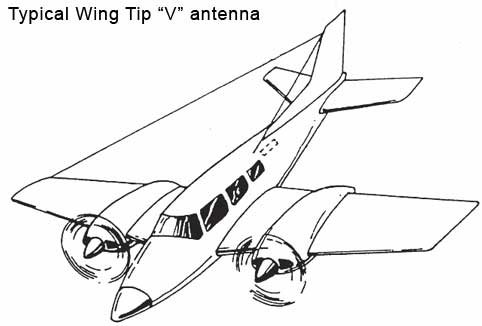
The inverted “V” antenna is recommended when a wing "V" is not practical and the antenna coupler is mounted in the back of the aircraft. The inverted “V” antenna will produce maximum signal
strength off the side of the aircraft and provide good efficiency at most frequencies. The inverted “V” produces a moderate amount of drag.
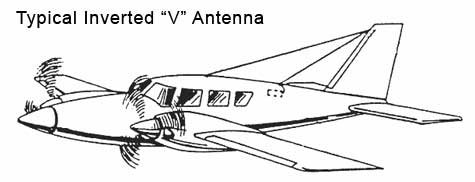
The long wire antenna is used when the HF coupler is located in the forward part of the aircraft. The long wire provides maximum signal radiation off the sides of
the aircraft and exhibit good efficiency even at the lower frequencies. Nulls in signal strength may be experienced off the nose and tail of the aircraft.
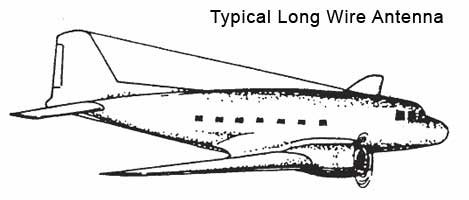
Short grounded wire antennas are primarily used on higher speed and/or high altitude aircraft. The short wire antenna have minimum drag and do not develop as high of RF voltages as the longer wire antennas. However the efficiency of the short antenna will be lower, especially at the low frequencies.
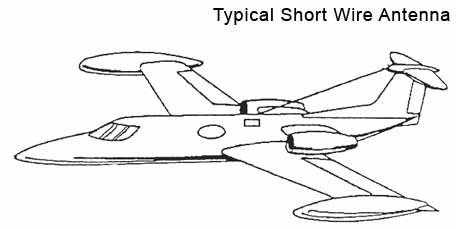
There a generally 2 types of shunt antennas. A towel bar style includes a rod or tube mounted on the airframe usually suited for helicopters.
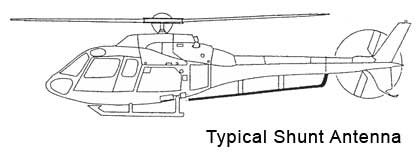
The other type of shunt antenna is designed by the aircraft manufacturer as a part of the airframe structure on the leading edge of the vertical stabilizer. Leading edge antennas are ideal for
Larger, high altitude jet aircraft.
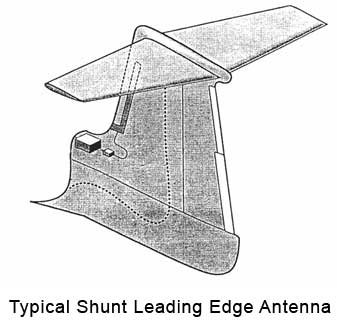
Probe HF antennas are ideal on aircraft where a long antenna is not suitable. It should be noted that probe antennas provide poor efficiency at lower frequencies as is the case with most short style antennas.
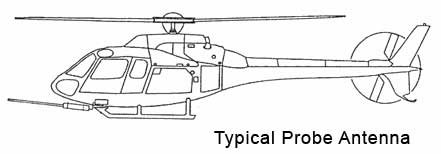
Previously, SEA answered the FAQ "...can the KTR-953 and KAC-952 be mounted in different locations in an aircraft". The answer to that question details the service bulletin (mod) levels that each unit must have incorporated for this installation scenario to be possible.
In addition to what these service bulletins offer in the way of installation flexibility, improper performance and actual unit failure can occur if the units are mismatched. KTR-953 units with SB 8 should only be paired with KAC-952 units with SB 9 & 10. KTR-953 without Mod 8 should only be paired with KAC-952 units without SB 9 & 10. Southeast Aerospace has actually seen units fail in the field when mismatched in this manner as well.